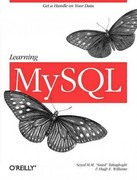Answered step by step
Verified Expert Solution
Question
1 Approved Answer
The textbook / lecture defines class Iterator that is then used together with class NodeList, which is the container. Software Engineering suggests the separation of
The textbooklecture defines class Iterator that is then used together with class NodeList, which is the container.
Software Engineering suggests the separation of the data structuring class container from the methods used in traversing the data iterator This allows to change the data traversing and accessing methods without affecting the container class. This is because iterators access the container data without exposing its structure.
Operator overloading allows to extend the meaning of the C operators to the user defined types, eg classes. In this example, the overloaded operators and check if two list nodes in class NodeList are equal or different depending on how the programmer defines the meaning of the two operators. The overloaded operators and offer the access of the next and previous list nodes. Finally, the overloaded operator allows to access the node content like a referencing operator an extension of p where p is a pointer to a variable in C language
Note that the overloaded operators and are binary operators, while and are unary operators.
Finish the definition of class NodeList and create a main program that uses all the class methods and show that the use of the operators is correct.
Change class NodeList so that each node stores a string instead of an integer
value. An object of class NodeList stores an entire sentence, such as the first node stores the first word of the sentence, the second node stores the second
work of the sentence, and so on
Implement a simple text editor in which every row is a separate object of class NodeList.
Create a class Iterator that has the following methods:
Submit the main program with comprehensive tests. Complete Task with up and down as a homework assignment. Submit to Lab
Method Left to move the current cursor to the word to the left of the
current position of the cursor.
Method Right to move the current cursor to the word to the right of
the current position of the cursor.
Method Up to move to the beginning of the row above the current
row. homework
Method Down to move to the beginning of the row below the
current row. homework
The text editor has the following methods:
Displayeditor displays the current content of the text editor, such as all sentences, one below the other.
Addword adds a new word read from the keyboard in front of the word currently pointed at by the cursor.
Removeword removes the word currently pointed at by the cursor. Use the defined classes to implement the simple text editor program.
Step by Step Solution
There are 3 Steps involved in it
Step: 1

Get Instant Access to Expert-Tailored Solutions
See step-by-step solutions with expert insights and AI powered tools for academic success
Step: 2

Step: 3

Ace Your Homework with AI
Get the answers you need in no time with our AI-driven, step-by-step assistance
Get Started


